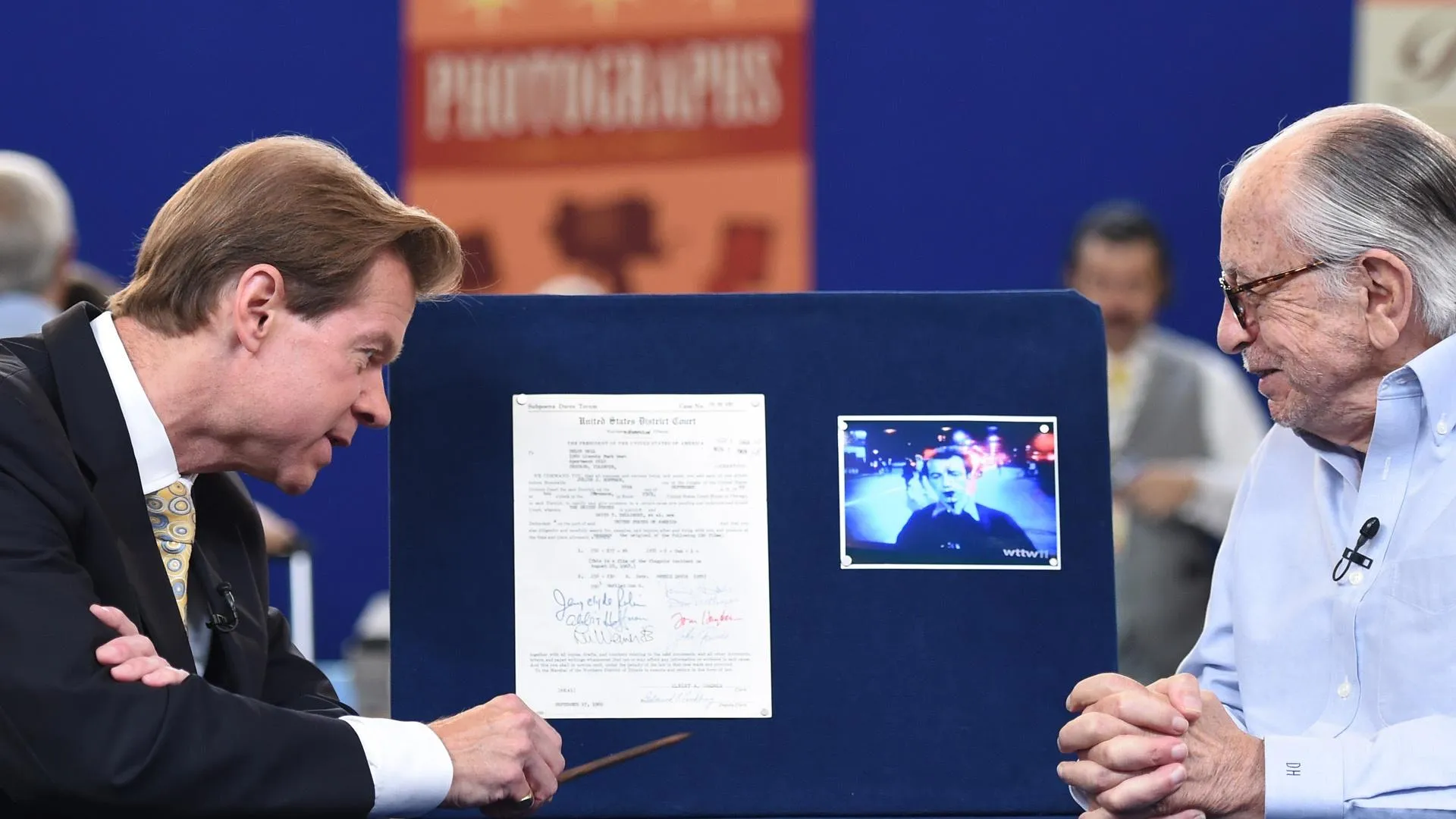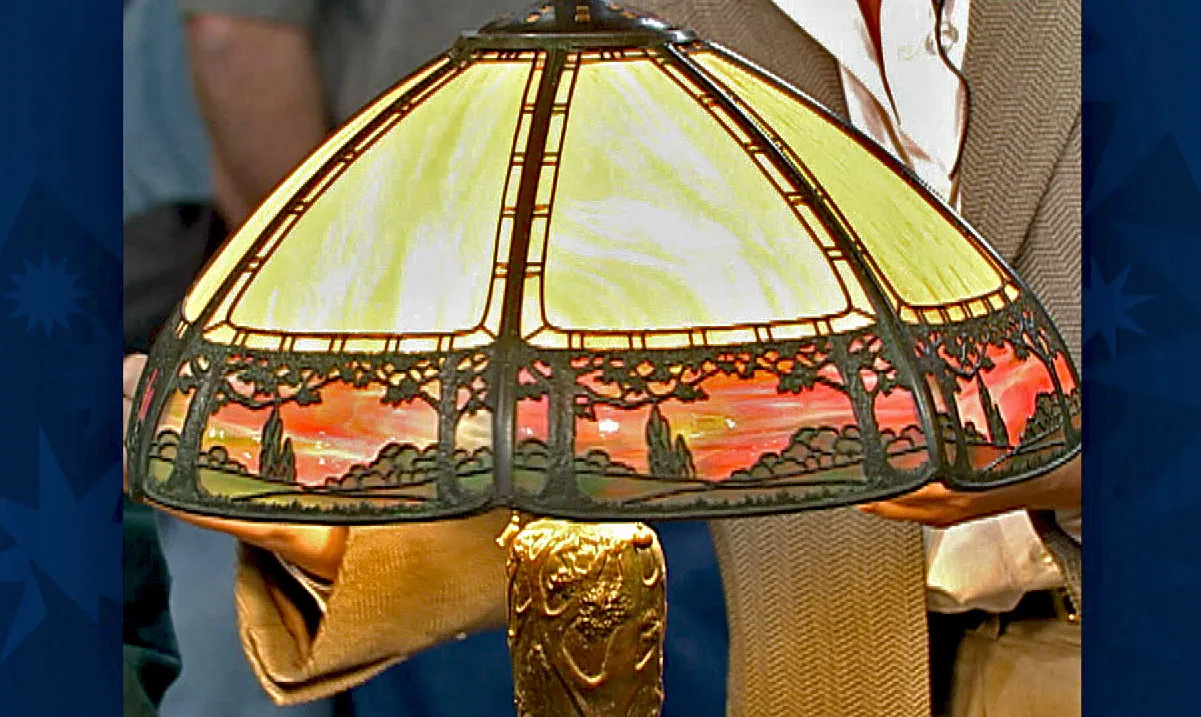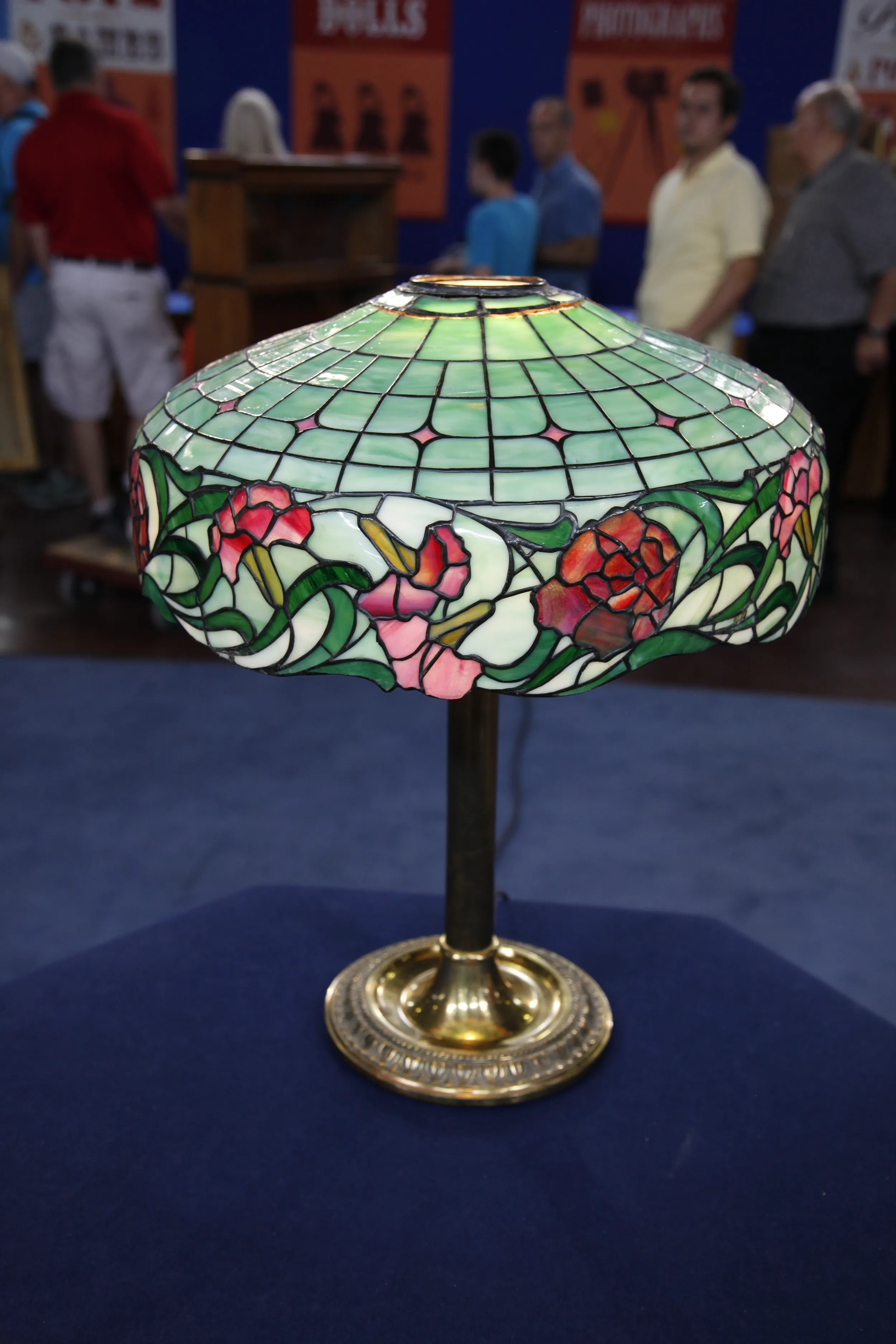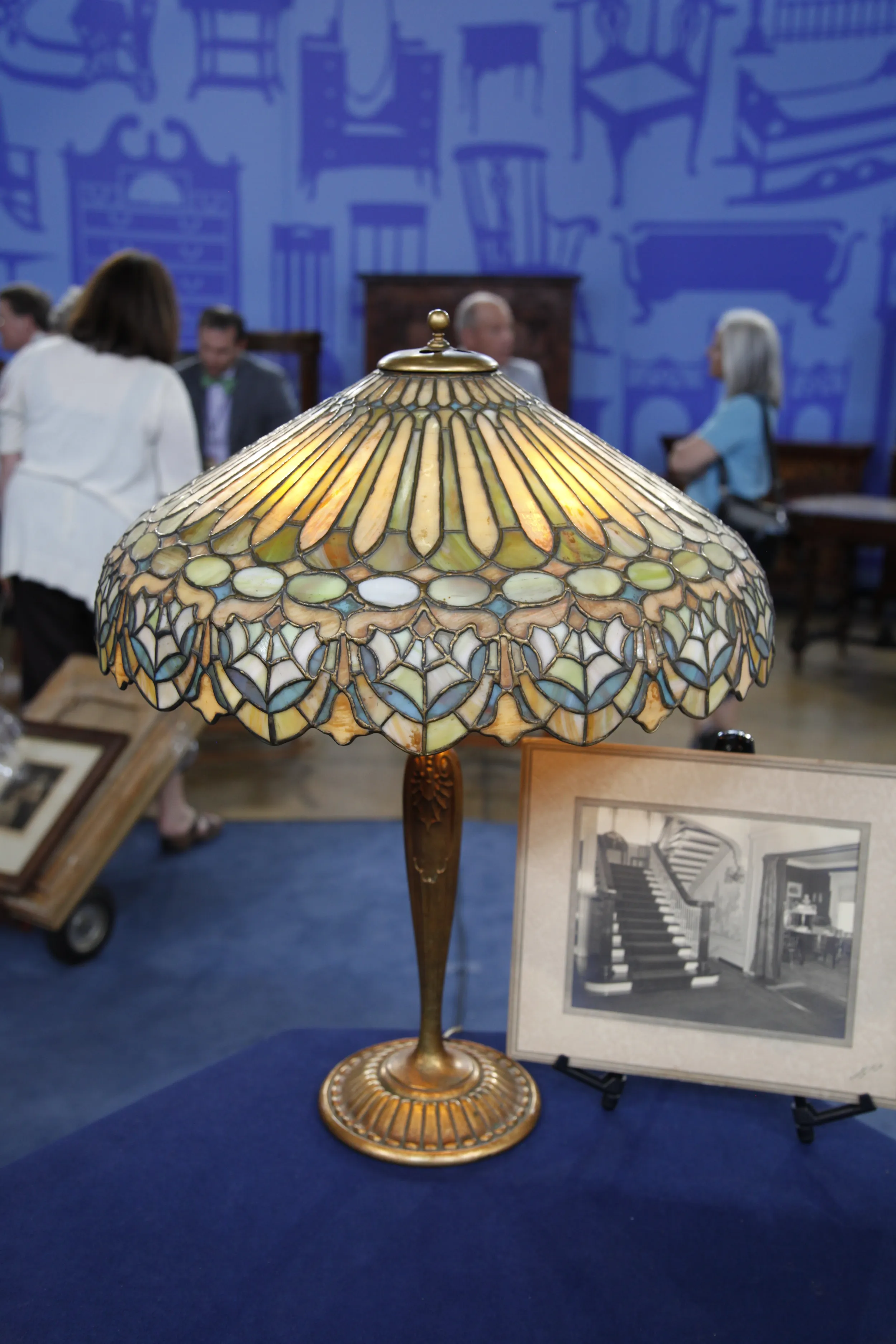GUEST: Well, it's a Tiffany lamp. I inherited it back in 1972, and it's been in a box ever since until this last couple days.
APPRAISER: And why do you think it's Tiffany?
GUEST: It has his name on the shade and on the base.
APPRAISER: We're going to look at the signature. Now, you notice that there's a reason why this is a little crooked, and I'm sure the viewers can see it, but it doesn't exactly fit on the base.
GUEST: Right.
APPRAISER: Now, let's just look at the signature, which is right there. And it's a little tag and it's embedded in the leading that's holding the glass together. And I'm going to hand this to you here. And then over here, I'm going to show you the other signature, which is right here-- it says "Tiffany Studios, New York," and a gigantic "472," which is very different from the size of the print that you see down here. When you put it back together, and I look at this lamp, I see two things. They're not Tiffany.
GUEST: They're not.
APPRAISER: No, I see a Unique Art Glass and Metal lamp shade, and then a base made by the Moe-Bridges Company. How these got together, I have no idea. The Unique Art Glass and Metal Company was a company that we very rarely have a chance to talk about, but they were the first company in 1904 to start making Tiffany-style lamps in the technique that Tiffany was using, which was a copper foil technique that was used in the assembly of the lamp. They had a very vibrant business. They made lots and lots of shades. They put out lots of paper ads about their product-- in fact, more than Tiffany ever did, which is hard to believe, so they were prosperous. I believe that they closed in 1917. This was probably made around 1910. The base is later. The base was made circa 1920. The base is a Moe-Bridges base, company from Milwaukee, but when this base was made, it came along with a reverse-painted glass shade, not a leaded glass shade. And in the reverse- painted glass shade, the ruins of the Parthenon in Athens were depicted, which explains why this pattern on the base looks like a Greek revival design. On the base, the Tiffany Studios stamp. It's not a good stamp, it's not a clear stamp, and the number, the 472, I actually think that was already there. I checked the Tiffany catalog from 1906, and number 472 was a bamboo lamp floor base, which obviously this is not.
GUEST: Yeah.
APPRAISER: Who owned it before you, you said you inherited it?
GUEST: Yeah, back in '72, my father died and I ended up with it.
APPRAISER: Okay, do you know where your father bought this?
GUEST: I don't know where he got it from.
APPRAISER: There were people, believe it or not, in the 1970s, putting fake tags in lamps. And that's exactly what happened here.
GUEST: Oh really?
APPRAISER: Where the tag is located, all of the leading has a little bit of, funny little surface treatment that you don't find on any other leading around the rest of the interior of the lamp. There's calcification all around the signature in the area, and that's how you can tell somebody had tampered with it.
GUEST: Oh, yeah?
APPRAISER: This is what I always say to people: you look at the object first, you don't look at the signature. Signature is always the last thing I look at. In a retail store this would probably sell for $1,000 to $1,500.
GUEST: I was hoping it was worth a little more than that.











